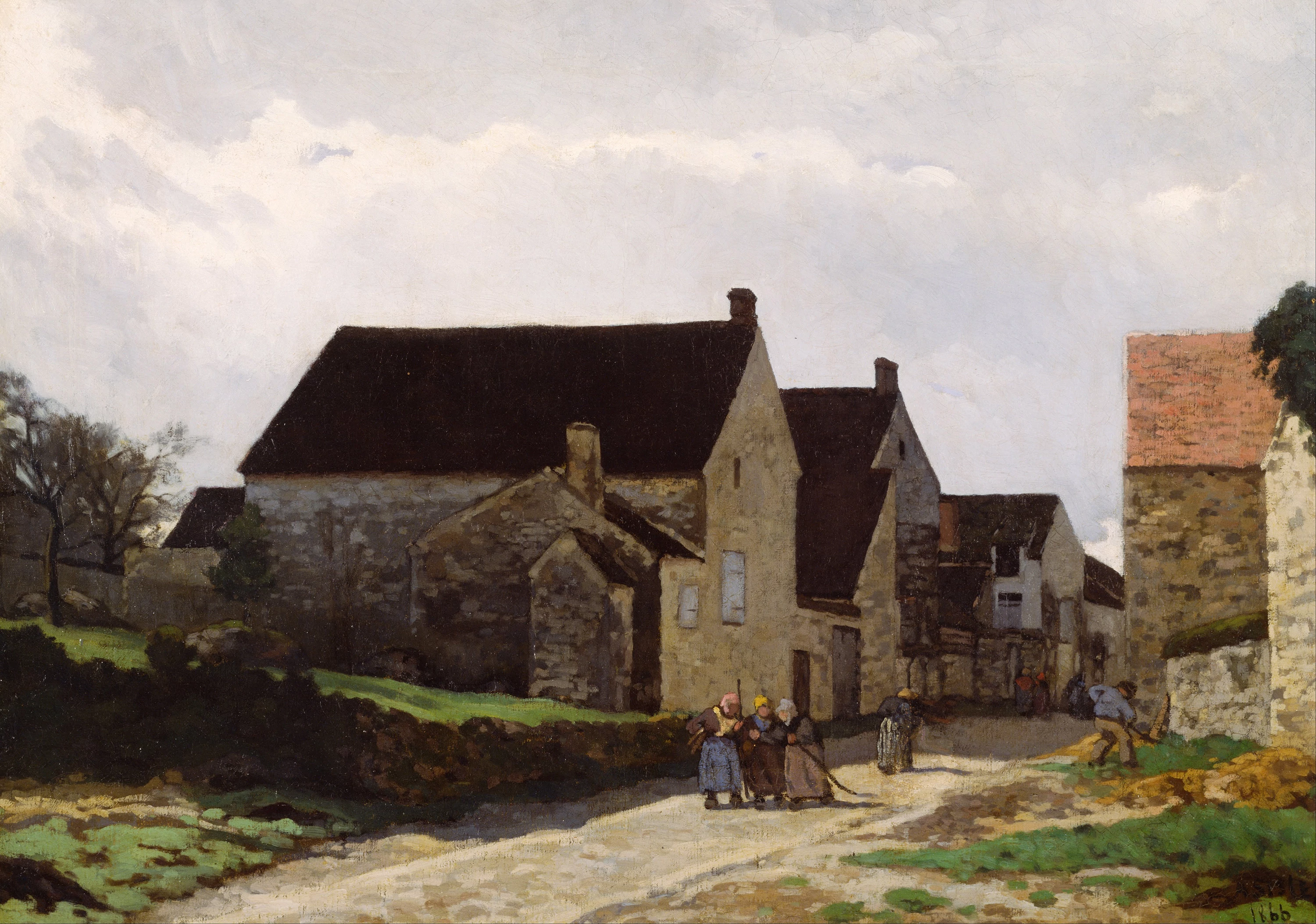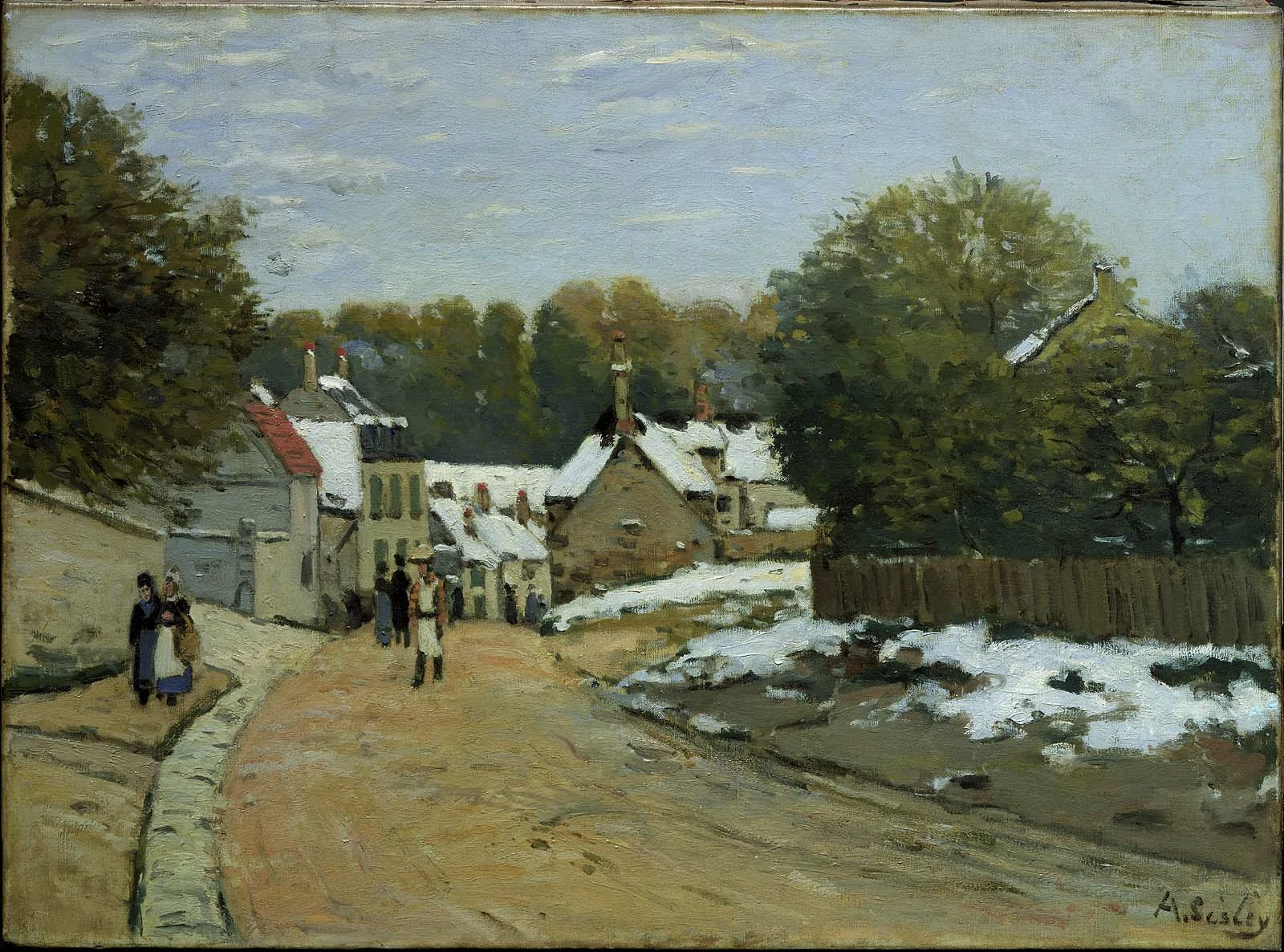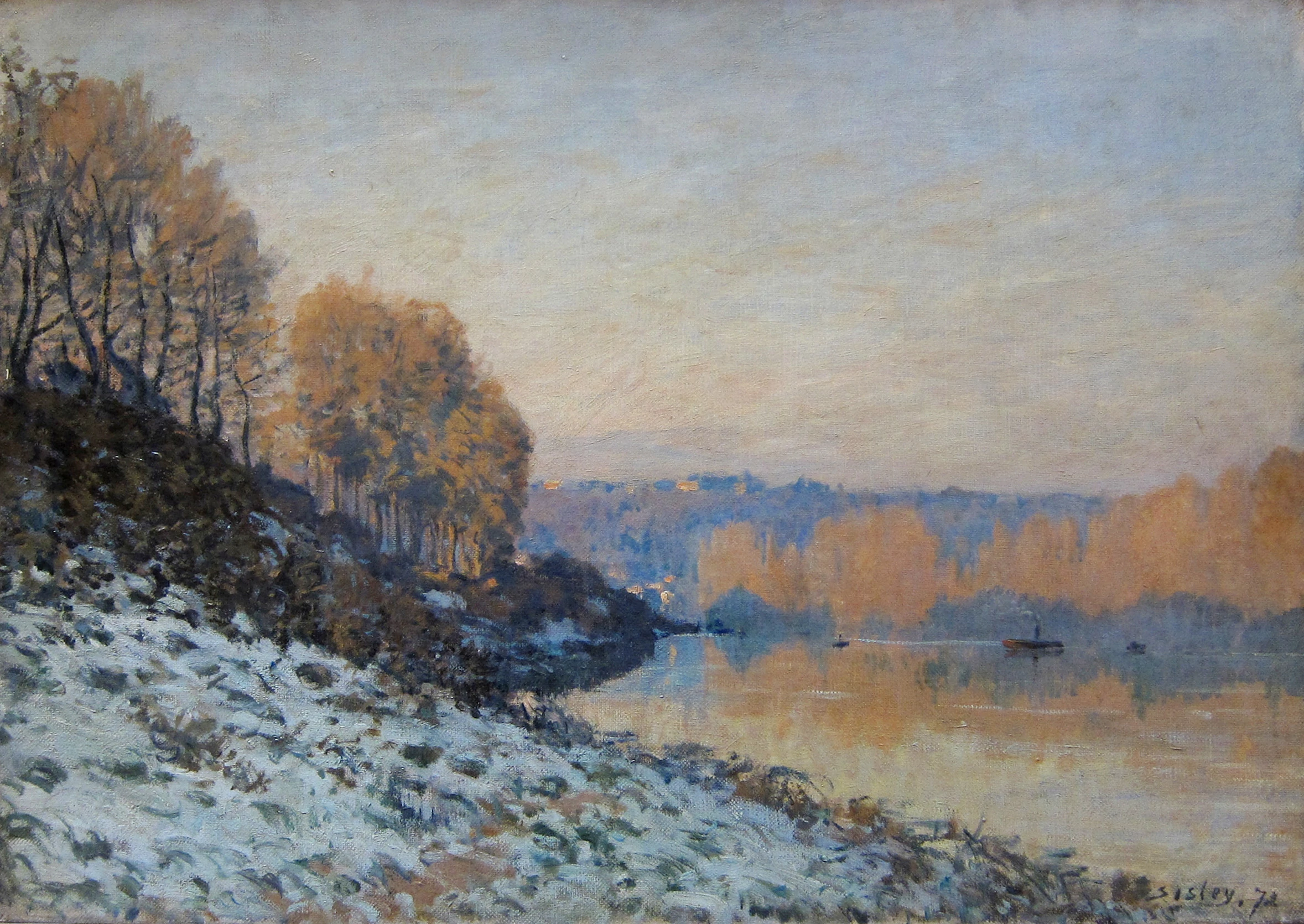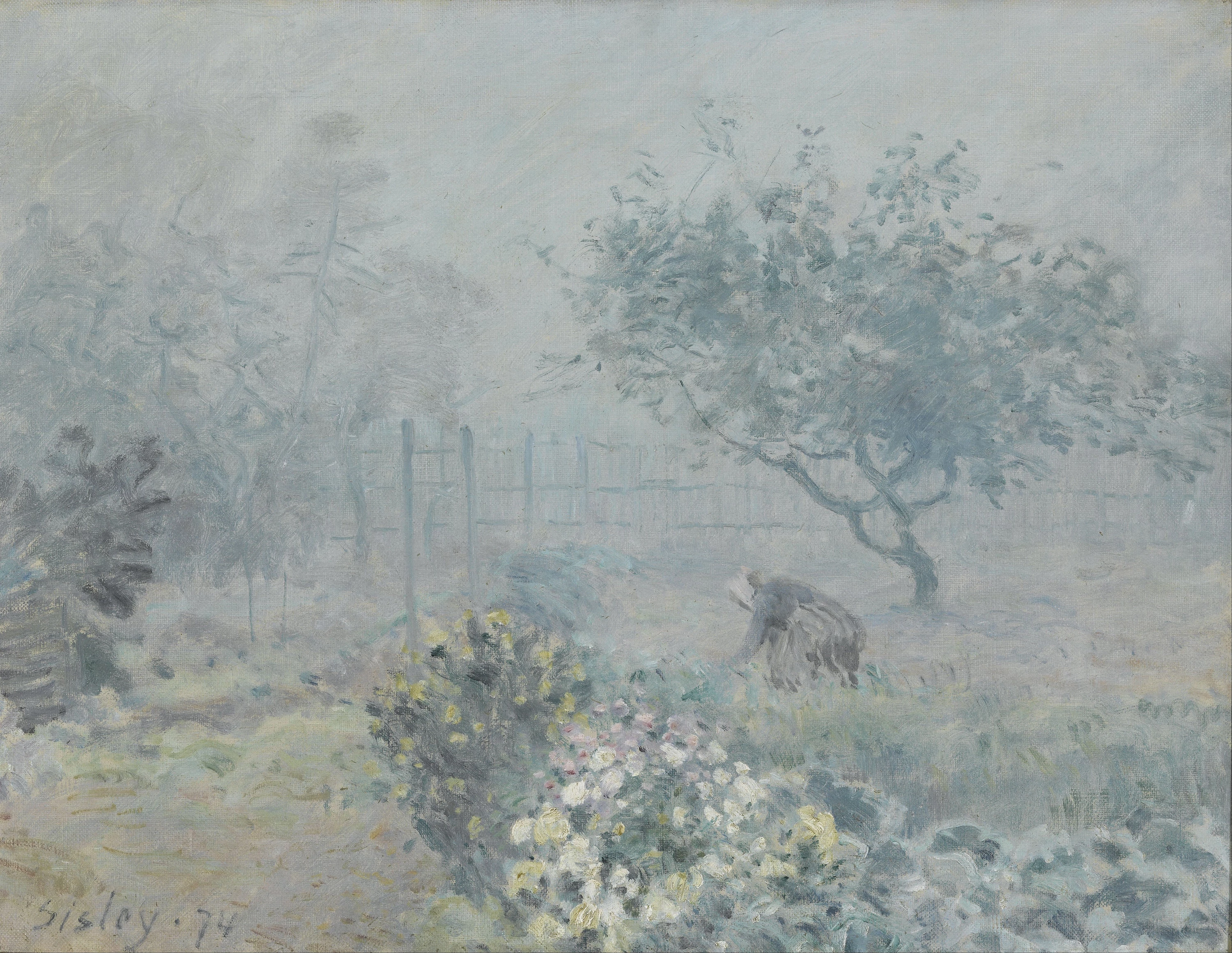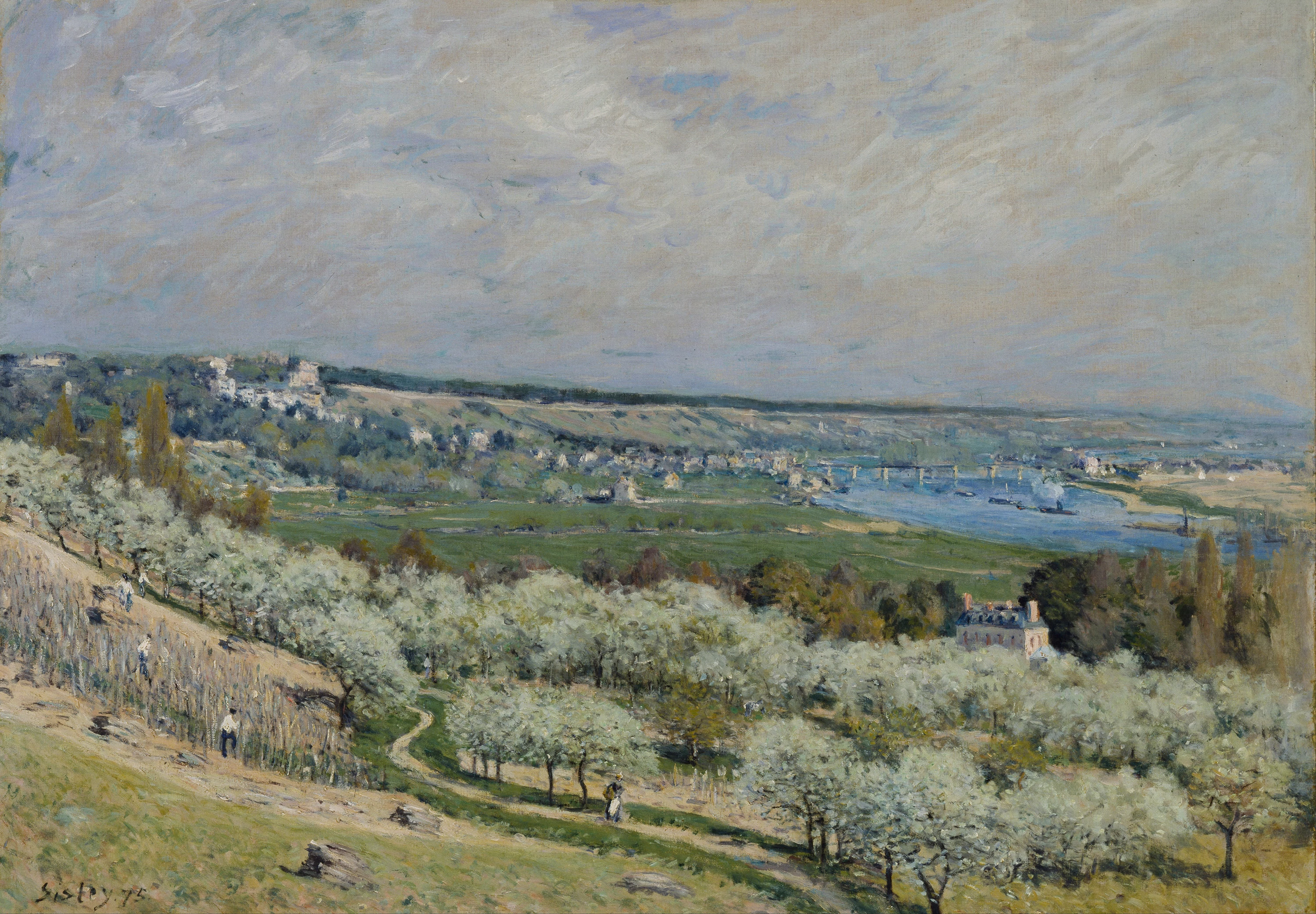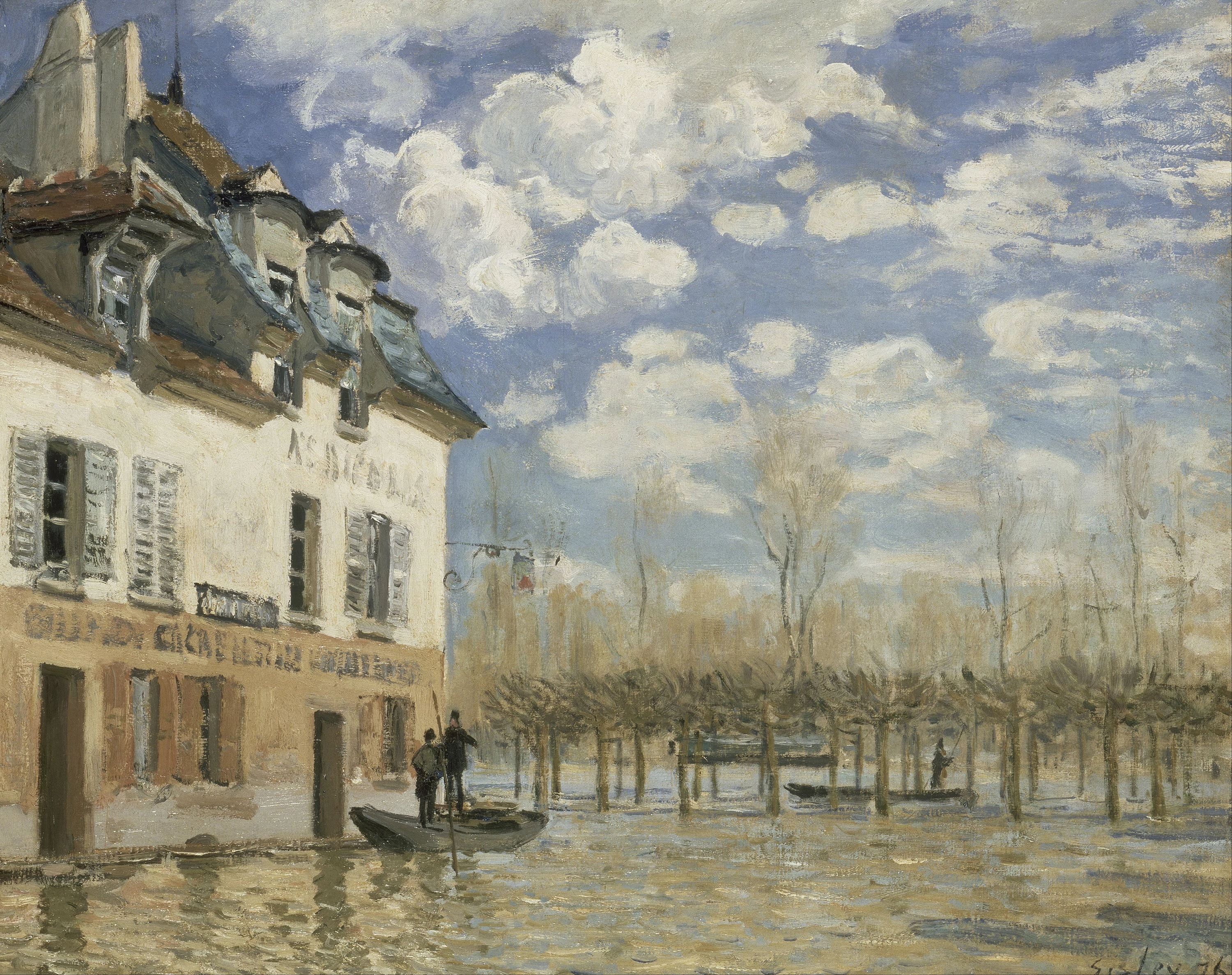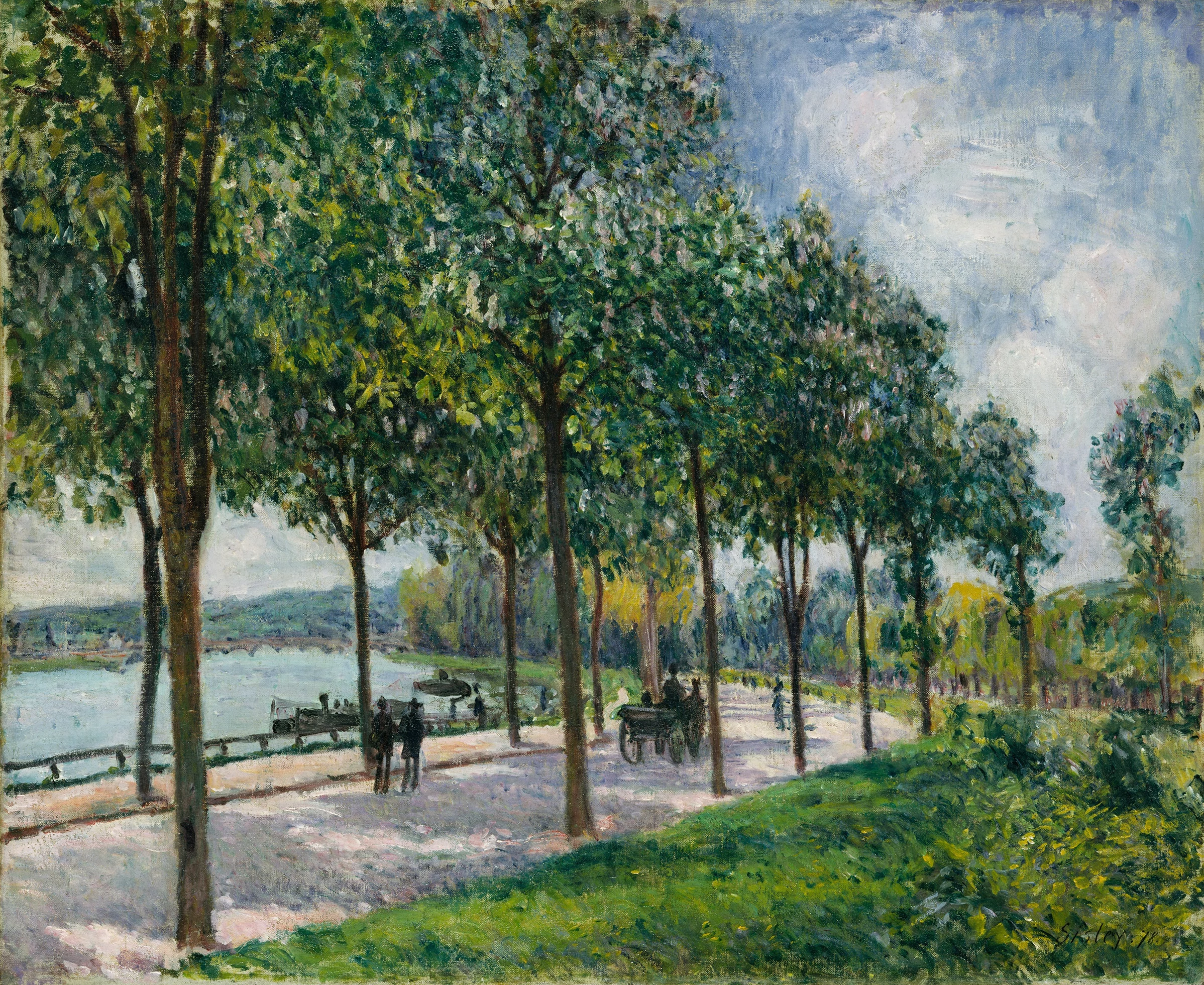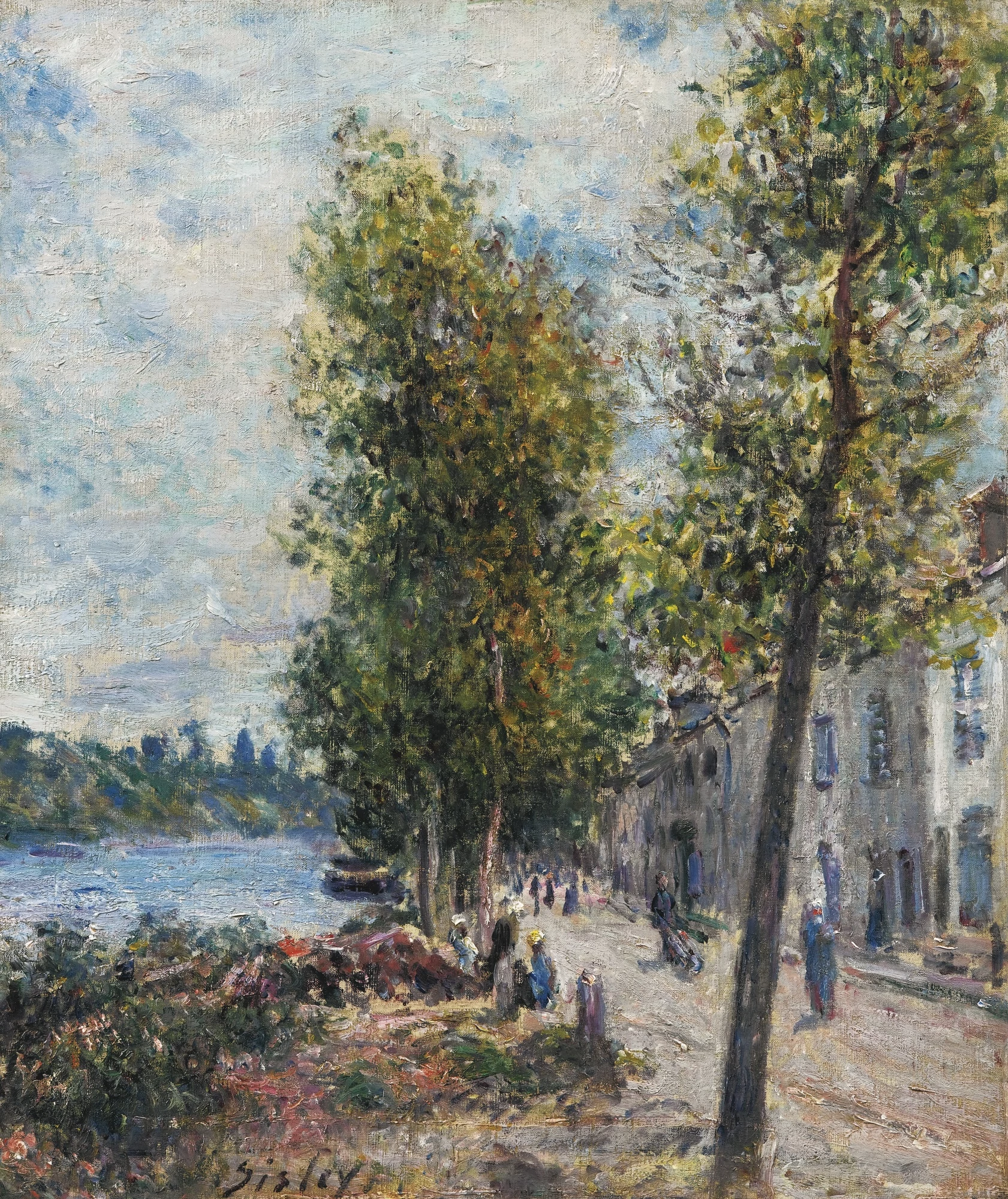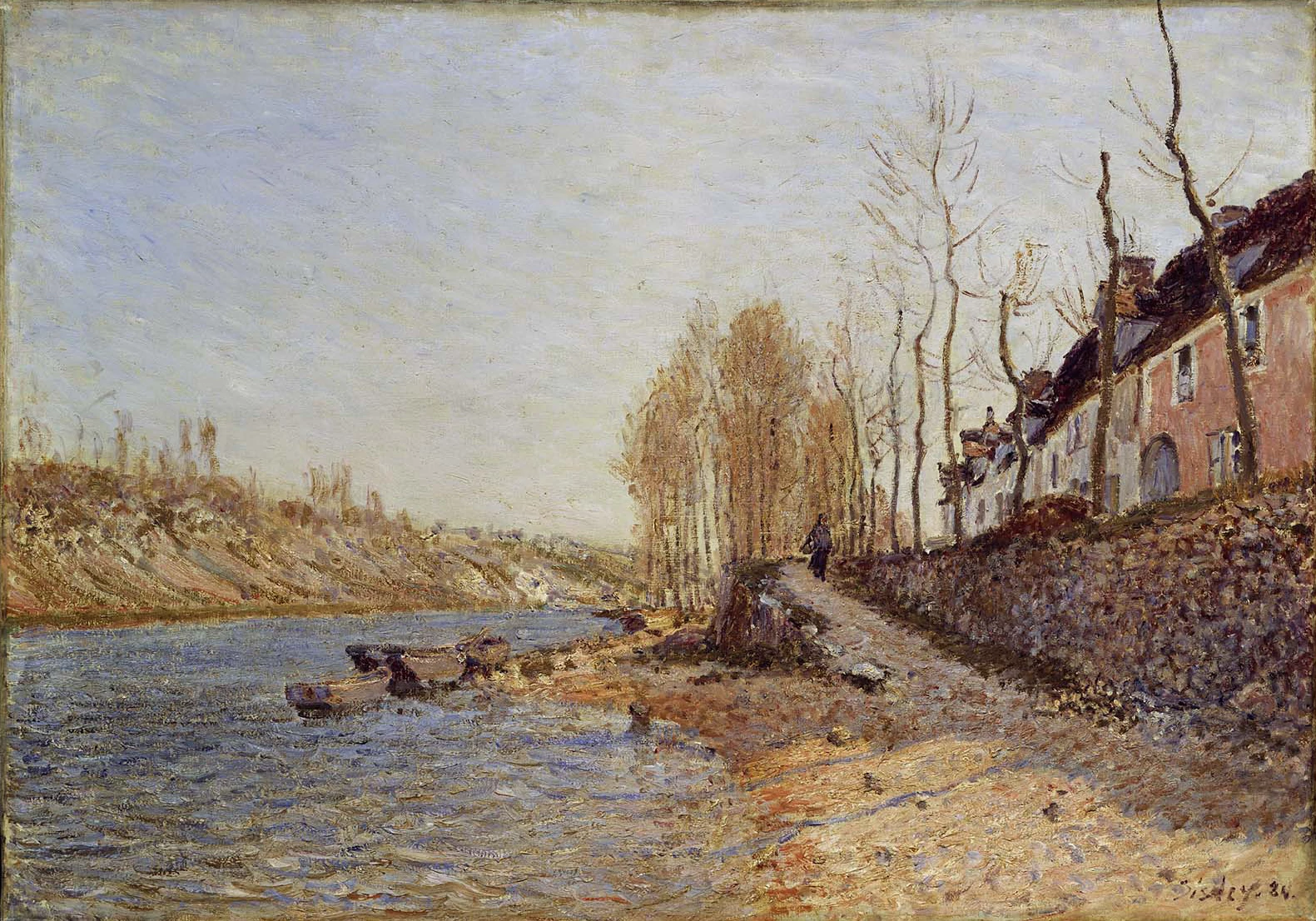Alfred Sisley gave up a lucrative business career to paint outdoors. Together with Claude Monet, Pierre-Auguste Renoir and Morisot, Sisley helped father the Impressionist movement, but unlike his contemporaries, his work was never highly valued and to this day he remains the forgotten impressionist. What happened to poor Sisley?
Alfred Sisley was raised in Paris in the wealthy family of a luxury importer. His father encouraged him to study business, and sent him to London at age 17 to learn the trade. But in London, Sisley discovered the shimmering seascapes of J. M. W. Turner and John Constable’s pastoral fields. Sisley returned to Paris at 21, intent on studying painting.
Back in Paris, Sisley studied painting alongside Renoir, Monet and Frédéric Bazille. The four young artists traveled together, grew disillusioned with the academic expectations of the Salon, and developed the foundations of the new plein air genre of expressive, outdoor painting. Over the next 20 years, Sisley took part in the Impressionist exhibitions of 1874, 1876, 1877, and 1882, making a substantial contributor to the movement.
But Sisley’s work was never truly appreciated. Unlike Renoir, who’s paintings hung in the Louvre next to the old masters, or Monet, who was able to buy and build a rural paradise for his family outside of Giverny, Sisley’s work sold poorly, and after the death of his father in 1870, he lived out his career in poverty. Even today, Sisley’s work sells at auction for a fraction of that of his contemporaries, and his life and practice are relatively neglected by scholars and curators alike.
There are a number of possible reasons why Sisley was ignored. Some historians guess that the influence of English painters on his work made it less marketable in France. Sisley also left behind very few documents of his life. A handful of letters and a single sketchbook—all blandly uninformative.
My theory applies to many lesser known artists: Sisley wasn’t interested in innovation, and western art fetishizes change. Through his whole career, Sisley painted landscapes. Serene, meditative landscapes with a careful eye for weather and light. While his contemporaries evolved their styles, pushing and changing Impressionism, Sisley stayed the course, refining and practicing his plein air work. But constancy isn’t highly valued. Historian Robert Rosenblum described his work as having “almost a generic character, an impersonal textbook idea of a perfect Impressionist painting” summing up the dismissal of non-disruptive art.
Much of art history idolizes the rebels and puts innovators on a pedestal. But art history is bigger than first place, and the patent refinement of a single, beautiful idea is worth noticing. So when you look at Sisley’s work, slow down, take it in. Take a moment to appreciate a life of quiet, dedicated practice.
...
Got questions, comments or corrections about Alfred Sisley? Join the conversation in our Discord, and if you enjoy content like this, consider becoming a member for exclusive essays, downloadables, and discounts in the Obelisk Store.
